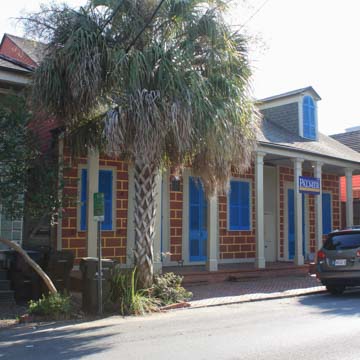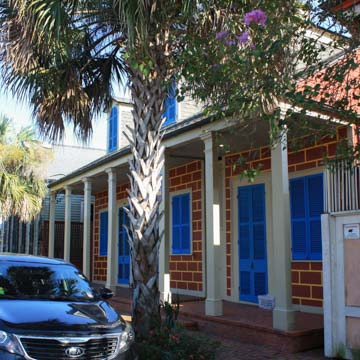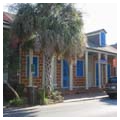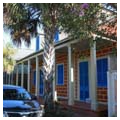Free woman of color Constance Rixner Bouligny, who owned investment property in New Orleans, built this house for her own residence. The brick-between-posts Creole cottage is unusually wide with seven openings across the front, including a narrow one at the end that led to an alley. The openings were all covered by French doors. In 1836, merchant Asher Moses Nathan purchased the house for his placée, a free woman of color whom he could not marry because of the Code Noir (his wife lived on the Gulf Coast). Nathan remodeled the house in Greek Revival style, including the addition of cypress panels to the facade to simulate stone and the replacement of some of the French doors with windows. He also built a two-story slave quarter and kitchen building at the rear of the house. The house was sold at auction in 1843 after Nathan’s fortune suffered in the Panic of 1837. In the 1890s the house was divided into three rental properties. When architect and preservationist Cizek purchased the building in 1976 it was in poor condition. He renovated it for his own residence, painted it the red color it was in the mid-ninteenth century, and named it Sun Oak for a large tree in the rear.
You are here
Sun Oak
If SAH Archipedia has been useful to you, please consider supporting it.
SAH Archipedia tells the story of the United States through its buildings, landscapes, and cities. This freely available resource empowers the public with authoritative knowledge that deepens their understanding and appreciation of the built environment. But the Society of Architectural Historians, which created SAH Archipedia with University of Virginia Press, needs your support to maintain the high-caliber research, writing, photography, cartography, editing, design, and programming that make SAH Archipedia a trusted online resource available to all who value the history of place, heritage tourism, and learning.












